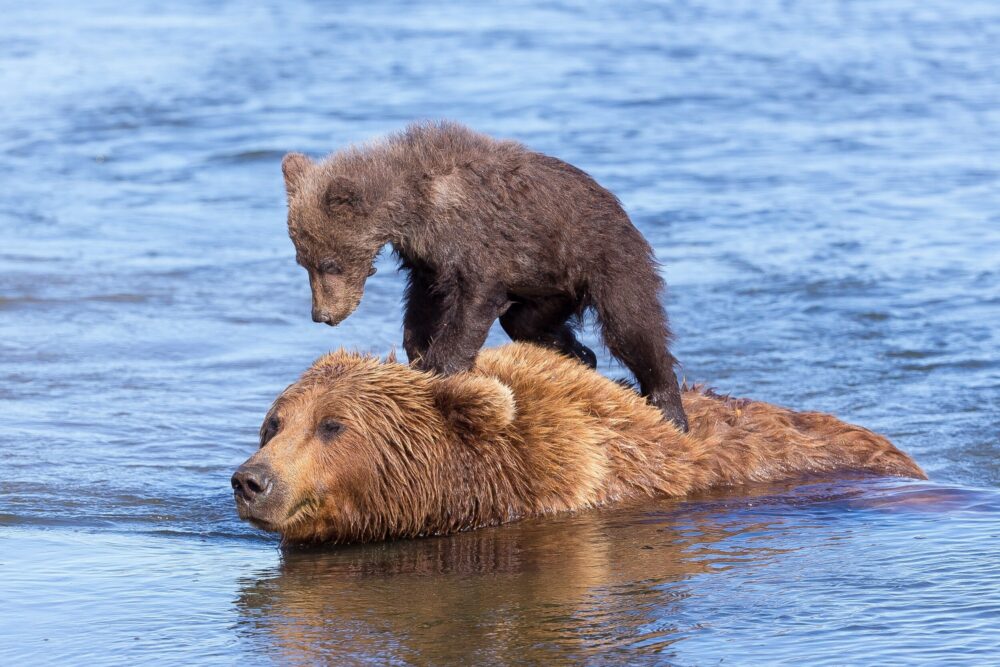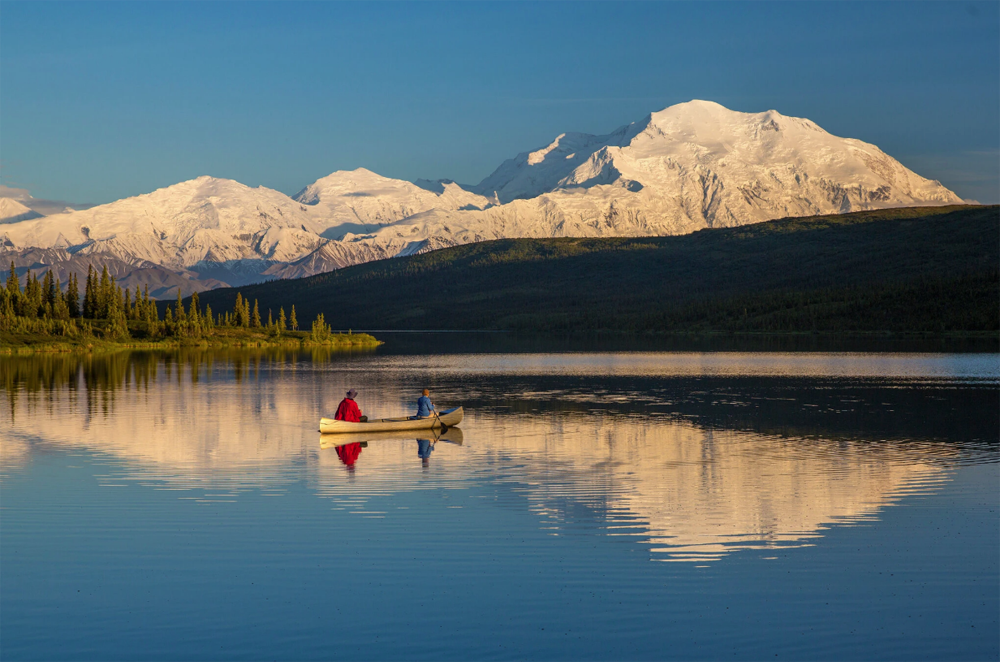
Momma bear surfing with her ‘Missy Brown’ in Alaska.
Traveling in Alaska this summer? Bring your sense of adventure, but also a backup plan and some patience
Canada is on track to allow non-essential travel for fully vaccinated Americans as of mid-August.
Original story by Samantha Davenport, Emily Mesner / ADN / July 19, 2021 / portions extracted by Skip Clement
Alaska’s tourism industry is rebounding. But this summer, from Fairbanks to Homer, out-of-state visitors and traveling Alaskans can expect crowded restaurants, long lines and busy boardwalks.
Many hotels and lodges in the state’s tourism hotspots are booked months in advance, and some have had to cap their capacity. Rental cars are in short supply, too. Booking a vehicle on Turo, a car-sharing service, can cost hundreds. And going out to eat may require more planning than usual. Some restaurants have chosen to close an extra day a week or more to give staff a much-needed break.
Some independent travelers said they have made their trips to Alaska more enjoyable by renting Airbnbs with kitchen access or making a stop at one of the two Costcos in Anchorage. Others said having backup plans made their trips more manageable.
Many of the challenges are related to a shortage of workers
Fly-in destination fishing lodges are experiencing similar issues with the scarcity of summer help but manage even though they too have help wanted pressure points. Regardless, travel issues persist for their clients, and some squawking reported about in-camp delays. However, no one is complaining about the fly fishing – it’s a fantastic ‘fish’ year so far.
Day-tripper angling out of Valdez/Homer is very problematic as the motels and restaurants are overwhelmed and statewide concerns about COVID rise looms.

Looking for up close and personal future care needs? Bread & Brew Anchorage, Alaska.
Facebook image by @breadandbrewak.
Tourist-heavy towns
Canada is on track to allow non-essential travel for fully vaccinated Americans as of mid-August. Tourist-heavy towns typically hire many J-1 visa workers — foreign college students who travel to Alaska to help during the state’s busy tourism months.
In Fairbanks, Jay Ramras, owner of Pike’s Waterfront Lodge and Pike’s Landing, said staffing is down around 40% at the restaurant and 20% at the hotel. As a result, the lodge has had to cap occupancy at 80%.
“When we have tried to reach 100% occupancy, it just wreaked havoc with our workforce,” Ramras said.
The restaurant is closed on Sundays due to short staffing.
Most guests get it, he said, but some travelers still have high expectations.
“Because it looks normal, they think that things are normal, and we’re doing a Houdini trick every day trying to present that facade,” Ramras said.
Some businesses are reporting the highest number of visitors in May and June they’ve ever had, he said.
Many of restaurants in Homer are choosing to close one or two days a week

Alaska Railroad is one option for D.I.Y. travelers. The scenic Coastal Classic line (above) from Anchorage is a convenient way to get to, for example, Seward.Credit…Alaska Railroad/Teresa Severson
“Our restaurant folks are dealing with a staffing shortage, and costs of supplies and availability of supplies added on top of that,” he said.
Housekeeping is another sector being hit hard. Many lodges and hotels are booked at capacity through August, Anderson said, with few openings in September.
The president and CEO of the Alaska Travel Industry Association said hiring challenges in the tourism sector have been a hurdle statewide. Not only is Alaska competing with other travel destinations for workers; businesses are competing with each other for a limited pool of potential hires.
— Sarah Leonard
Kat Sorensen with the Seward Chamber of Commerce said many restaurants in town have chosen to close one or two extra days a week, just to give their staffs a break.
The staffing shortage is a combination of fewer J-1 workers and the U.S.-Canada border closure, she said. In any non-pandemic year, she said a handful of independent travelers would drive up from the Lower 48 to live and work in Seward for the summer, sometimes “a dozen or two.”
“That’s a lot of shifts that aren’t being covered,” she said.
Story aggregated – Go to ADN for complete story and images. . .
Some bad news
Alaska is a leader in rapidly rising COVID 19 cases because of the unvaccinated – 14 day change is +413% – as of July 19, 2021:
Sitka, Valdez-Cordova, Kenai Peninsula Borough, Anchorage, and Juneau all with over 60% new cases. Most other cities and boroughs over 50%.
Source: NYTimes


